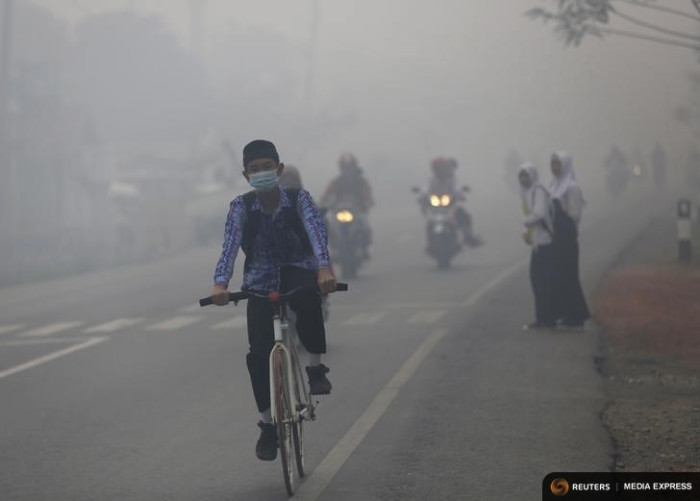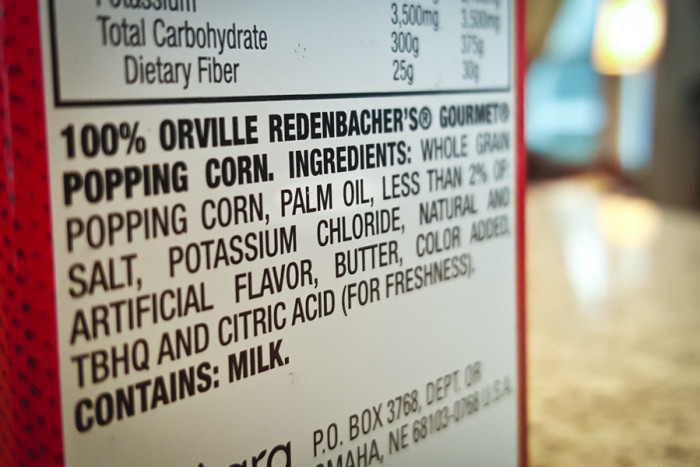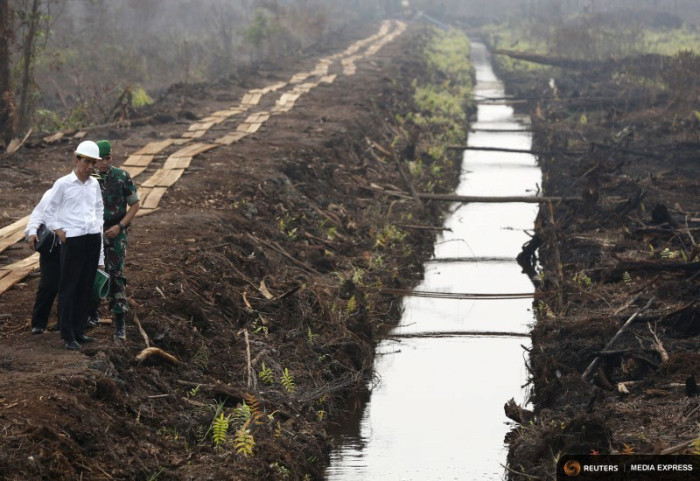
As Western Washington settles into its rainy season, Indonesia is welcoming the rains as well, clearing the air after two months of forest fires that are the worst the country has seen in decades.
In the most affected areas, the smoke was so bad that schools and offices were closed in Indonesia. The fires had a human toll: more than half a million people suffered respiratory problems and 21 died.
“Even when it got rain, it was not enough to eradicate the fire smoke,” Wahyu Riawanti, a political science lecturer who lives in Jakarta, said in an email. “It needed a whole two days rain to completely clean the air.”
When the fire was finally quenched, over 8,000 square miles of forests and other land had burned, according to reports from the Associated Press. Economic losses are estimated to be $9 billion. The fires have also taken the lives of endangered animals, like the orangutan, and devastated some of the earth’s most biodiverse forests.
More sobering is that forests in Indonesia are often intentionally burned to clear land for the palm oil industry — an action rooted in global supply chains with dire ramifications for the planet’s health.
Palm oil is everywhere in food and beauty products. Many Americans roll out of bed, unknowingly eat breakfast cereal containing palm oil and then lather shampoo containing the oil in their hair before even leaving the house. Americans aren’t the only ones driving demand — the European Union, China and India also import the product.
Our addiction to palm oil products is stripping the earth of two of its largest sources of carbon. Both the natural mature forests and the peatland, which is a wet soil layer made of up decaying plants, contain an enormous amount of carbon. When forest fires burn, the peatland can continue smoldering for many miles under ground.

Indonesia has been the third largest emitter of carbon dioxide in the world over the last several decades — but the primary factor isn’t industrial pollution — it’s forest loss. A Nature study found that 23,000 square miles of primary forest has been destroyed between 2000 and 2012 — that’s about the size of Western Washington.
When forests disappear on that scale, there’s a huge net increase in carbon dioxide in the atmosphere, speeding climate change.
“The forests are the center of life as they become the lungs of the world,” Jajang A. Sonjaya, who grew up on the slope of Mt. Ceremai in West Java right next to the forest, wrote in an email. “I think that I must do something to save the forests and land for being destroyed; so we still can breath easily in the future.”
Sonjaya now works in community development for Blue Forests, helping bring science to the public. He recalled that the fires started in the 1980s when the Indonesian government under President Suharto enacted the national forestry concession system. Local companies obtained the rights to clear land for palm oil plantations, particularly on Sumatra and Borneo islands, with plans to serve multinational corporations’ big appetite for palm oil. Because it was cheaper, most chose to burn the forest rather than clear it with tractors.
Alongside the growing palm oil industry, the government bulldozed forests on Sumatra and Borneo to make room for transplanted people from more densely populated parts of the country. Jenny Novita Aritonang, whose father worked for the government’s transmigration program, grew up in the 80s in Pontianak, on Borneo. She recalls visiting the area of a new village developed for people from Java island.
“My late father explained to us that the area was once a forest, and they cut the tress down to build the village. Hundreds, thousands, or maybe even millions of people have been relocated from Java island, and this means more and more forest are destroyed to build new villages,” she wrote in an email.
How are indigenous communities in Indonesia impacted by the palm oil boom? (Video by Branden Eastwood for the Seattle Globalist)
Riawanti said that the fires have only recently become an issue to Indonesians in other regions.
“Most of the people in Java (where the capital city of Jakarta is) heard about smoke once a while but without the tremendous effect. The fire-smoke became a ‘disaster’ for the last three years, and in 2015 is the worst,” she said.
In the last several years, environmentalists have been calling for action to stop deforestation by targeting the palm oil supply chain. In 2008, Greenpeace activists dressed up like oranguatans and descended on Unilever’s headquarters in London. Unilever includes palm oil in many of its products, including the popular Dove soap.
As a result, Unilever said it would draw all of its palm oil from sustainable sources by 2015. The company is not alone. In 2010, Nestlè joined Unilever as one of the first to make a commitment to no deforestation and recruited the Swiss-based Forest Trust to review their palm oil supply chain. The momentum continued, and in 2014, Cargill, the largest importer of palm oil to the U.S., made a commitment to sourcing palm oil from sustainable sources.
The companies each set their own mechanisms of accountability — so enforcement is a challenge. But many companies’ codes of conduct go beyond deforestation to include prohibition of child labor, respect for labor rights and protection of indigenous land rights.
The Forest Trust, which has a Seattle office, released a statement on this season’s fires saying that they will “disengage with members who are proven through thorough investigation to have intentionally caused deforestation by land burning.”
Indonesia’s President Joko Widodo (known as Jokowi), who was elected in 2014, has taken steps to reduce deforestation and prevent fires, though some question whether his actions are enough to stop what Suharto started.

“In my opinion, it’s the Indonesian government under the Suharto regime which is responsible for the fires,” said Sonjaya. “The recent Indonesian government finds it difficult to control and handle the deforestation and the fires caused by palm oil plantations,”
In 2011, the previous president put a moratorium on issuing new licenses to develop peatlands —an action Jokowi supports, though it has not been fully monitored. The Nature study found more deforestation in 2012 than in 2011, concluding that forest clearing was being done illegally.
“Serious actions must be taken on illegal logging,” said Aritonang.
For Riawanti, the best hope for solving the issue is REDD+. That stands for “Reducing Emissions from Deforestation and forest Degradation.” It’s a tool being negotiated through the United Nations Convention on Climate Change that would require payment by the global community for forest management.
Beefing up REDD+ is on the table at the UN climate talks currently taking place in Paris. But so far, the U.S. has not made a commitment to funding the REDD+ program (unlike supporters in the European Union and Japan). California has also considered including REDD+ in its cap-and-trade system, which offsets emissions using U.S.-based environment projects (including forests).
But unless big global players can set a meaningful course of action at COP21 this week, reducing our own personal palm oil consumption — and making sure that the what we do use is sustainably sourced — may be our best bet.

